Security configuration
macOS Big Sur, macOS Monterey, and macOS Ventura (Beta 11 build onwards) require users' consent before applications can access certain services from their Macs. When iManage Work Desktop for Mac is deployed on these operating systems, users need to provide permissions for the following actions:
Uninstalling the application.
Accessing the Services menu options in integrated Microsoft and iWork suite applications, Microsoft Outlook and Apple Mail, Finder, and Preview app.
Sending links, documents, or both from iManage Work.
Printing emails from iManage Work.
The following example explains the flow of events that occur when a user gives or denies permission to the application.
The user is working with Microsoft Excel and selects Services > Save As New Version Workbook. The following system message is displayed:
Figure: System message asking for permission for the application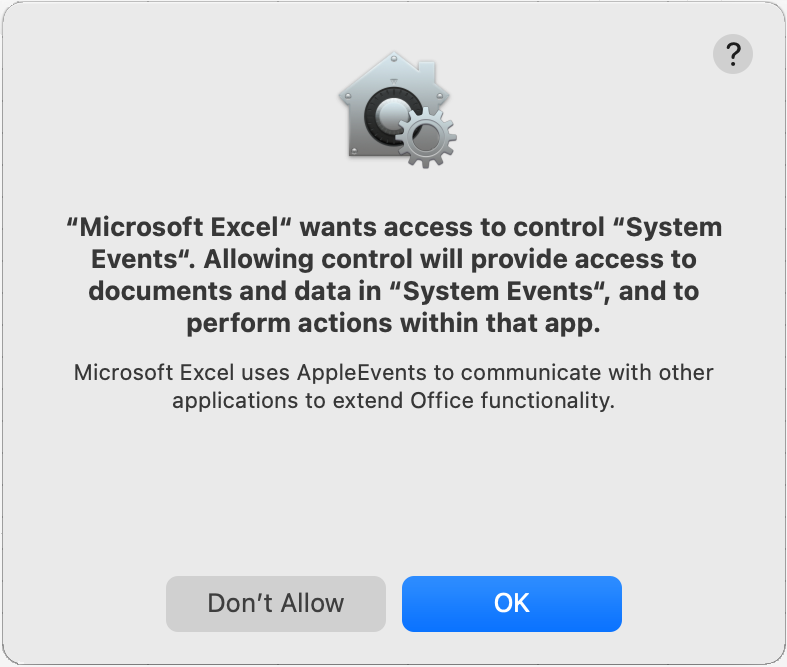
The following scenarios are possible based on what the user selects in step 1:
OK: Permission is successfully given to Microsoft Excel to access the System Events resource, which is required for the iManage Work Desktop for Mac integration with Excel.
Don't Allow: iManage Work Desktop for Mac displays the following dialog box (for the current and all following instances until the user gives the required permissions):
Figure: User consent notification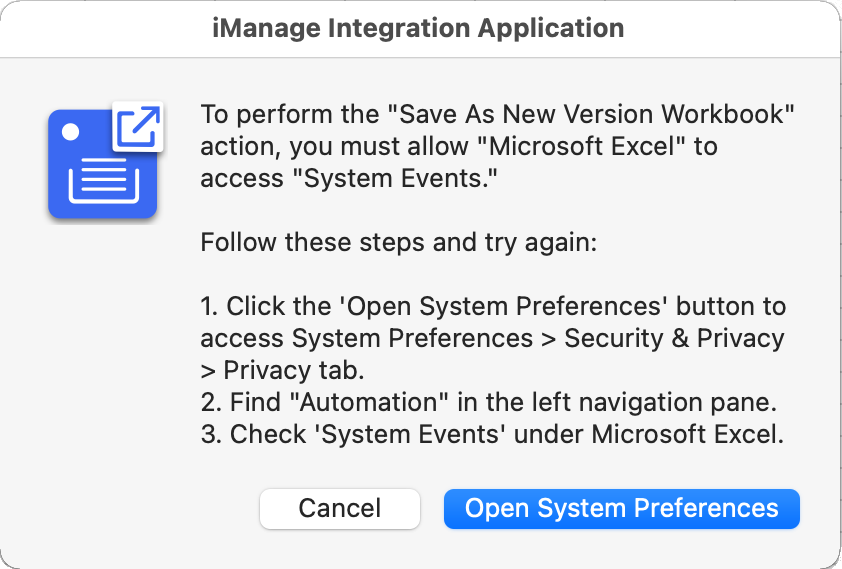
The following scenarios are possible based on what the user selects in Step 2:
Open System Preferences: The user can navigate to the check box as instructed, select it to grant the required permission, and perform the action again.
Cancel: iManage Work Desktop for Mac displays another dialog box (for the current and all subsequent instances until the user gives the required permissions) with details about how to give the permission manually:
Figure: User consent alert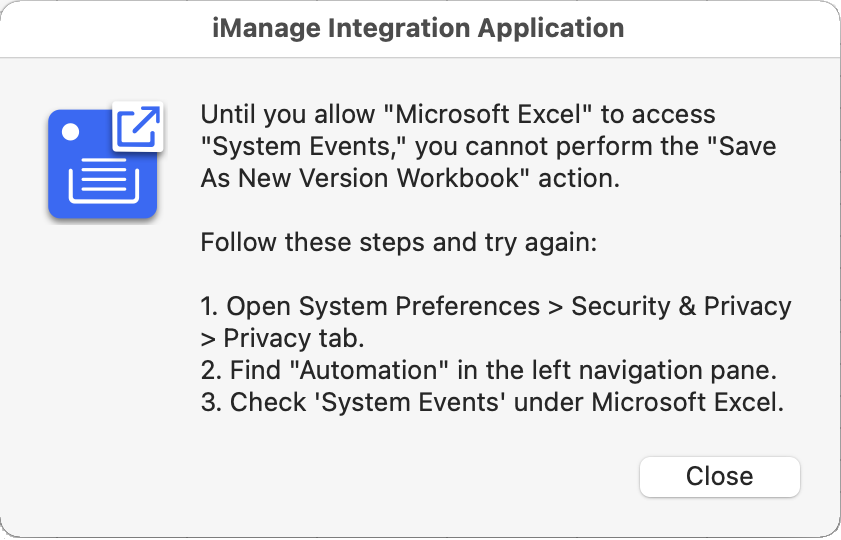
The user can select Close and then navigate to System Preferences > Security & Privacy > Privacy tab, and select the System Events check box under Microsoft Excel.
The user can now save the workbook by selecting Services > Save As New Version Workbook.
Turning off permission prompts
You can turn off the aforementioned permission prompts, which macOS Big Sur, macOS Monterey, and macOS Ventura (Beta 11 build onwards) display, for all users in your organization by pushing the Work for Mac.mobileconfig file using a Mobile Device Management (MDM) application. It is available in the iManage Work Desktop for Mac installation package in the /Library/Application Support/iManage/MDM Payload folder. When deployed, it's added to Profiles (System Preferences > Profiles) for all Mac users.
Providing permission to print emails from iManage Work
iManage Work Desktop for Mac 10.2.3 and later enable you to print documents and emails from iManage Work. The first time you try to print an email, an error message is displayed and you're prompted to permit iManage to use the accessibility features on your Mac.
Figure: Permission prompt
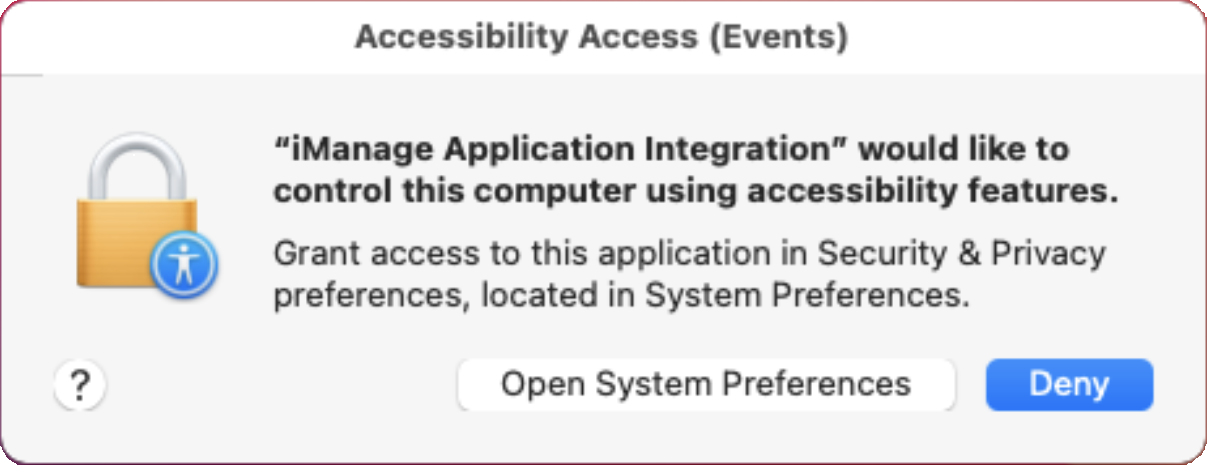
Select Open System Preferences to view the System Preferences > Security & Privacy > Privacy tab, and select the iManage Application Integration check box under Accessibility.
Applications are also required to prompt for permission before accessing parts of your Mac’s drive.
Figure: Permission prompt to access files
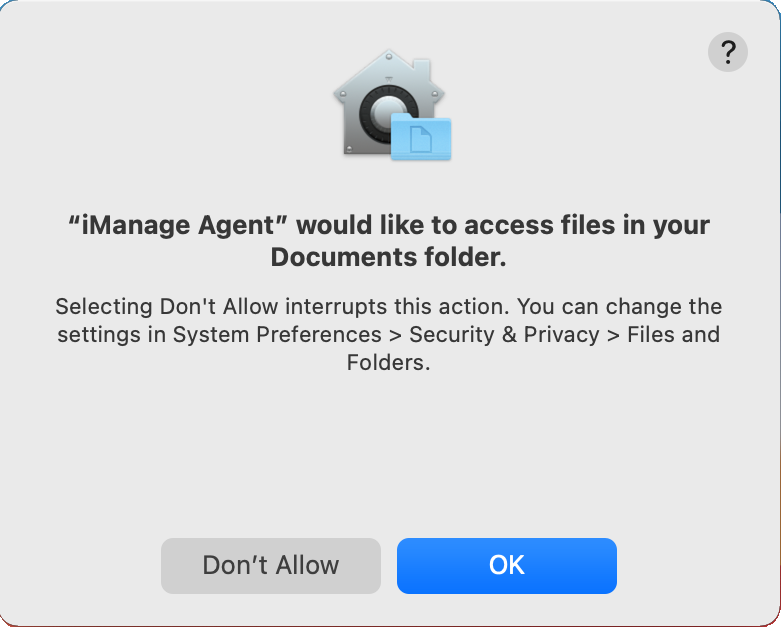
iManage Desktop for Mac prompts for permission to the following directories during use:
Documents: Access is required to this directory to check out a document, or open it for editing.
Downloads: Access is required to this directory to download a document.
Desktop: Access is required to this directory when uploading a document from desktop (for example, when you right-click and then select Upload to iManage Work).
When prompted by iManage Watcher, iManage Agent, or iManage Application Integration, you can select OK to grant access, or use the following configuration to grant access to these directories.
Configuring macOS to grant access
To grant access to the Documents, Downloads, and Desktop directories:
Open System Preferences.
Select Security & Privacy.
Select Files and Folders from the left pane. The following screen appears:
Figure: File and Folders permission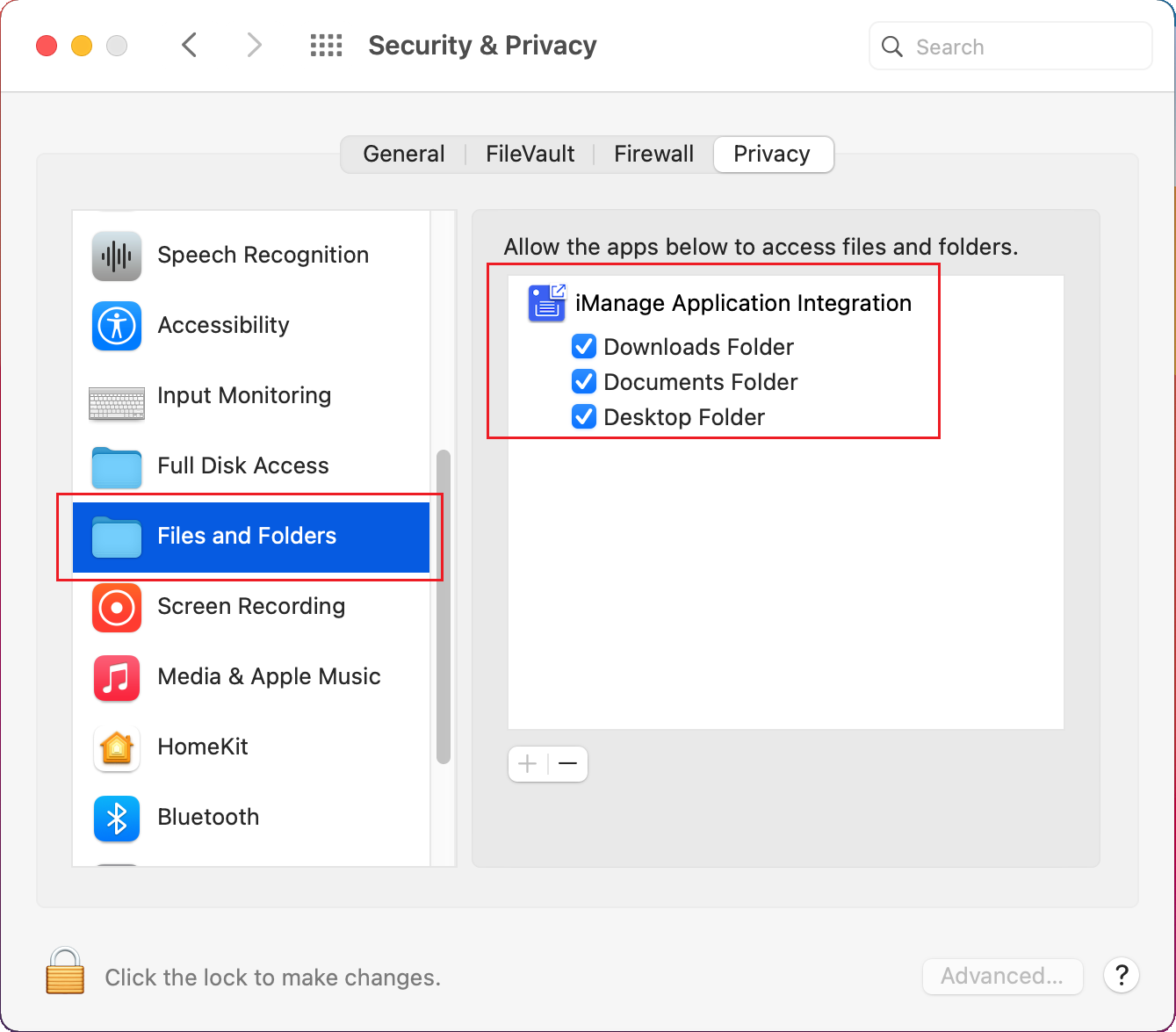
Select the following check boxes:
Downloads Folder
Documents Folder
Desktop Folder
